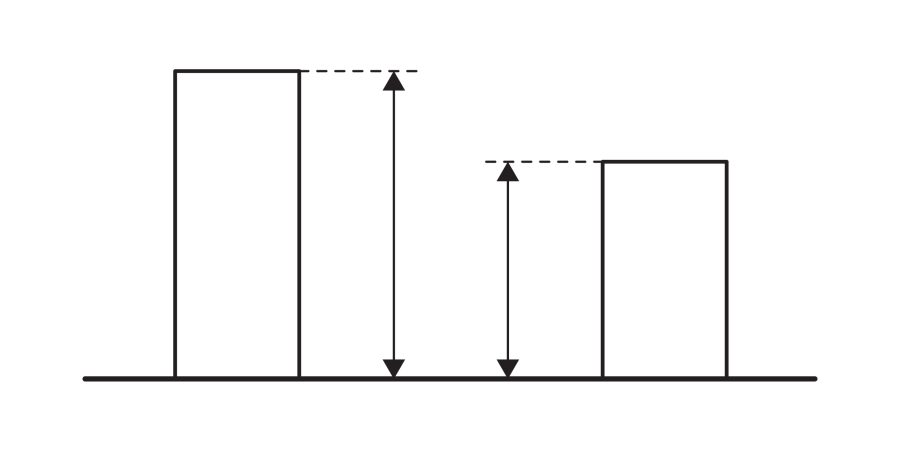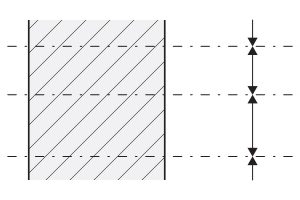Introduction:
When figuring out a building location and size, the occupancy group of the structure, along with its construction type go hand in hand.
Definitions
Combustible: Able to catch fire and burn easily, either as a flame or glow. Combustible materials are dangerous during a fire in a building.
Non-Combustible: Not flammable. It will not ignite, burn, or release flammable vapors when exposed to heat/fire.
- Non-combusitble does not necessarily mean that the material is fire-resistant, although most non-combustible materials typically have very high fire resistance.
- An example of a non-combustible material with okay fire-resistance is steel. Steel loses its strength quickly in fire, and will distort/collapse/deform, but it will not burn, ignite, or release flammable vapors. Steel keeps its structural integrity until about 600॰F, and retains about 50% of its strength at 1100॰F. A house fire burns at temperatures typically over 1000॰F, and can reach 1500॰F. It is for this reason that steel needs to be ‘fireproofed’.
Construction Type IBC Classifications
In the IBC, each building is classified as belonging to one of five major types of construction.
- TYPE I (1): Are the most fire resistive
- TYPE I (1) & II (2) : Non Combustible
- TYPE III (3), IV (4), V (5): Combustible
- TYPE V (5) : Is the least fire resistive (the most at-risk)
The classification of construction into these types is based on the fire-resistance rating of its major construction components. This includes the structural frame, bearing walls, exterior and interior non-bearing walls, floor construction and roof construction.
- The fire-resistance rating requirements for exterior, nonbearing walls are based on the distance from the building to the property line, the type of construction, and the occupancy group.
These classifications are to protect the structural elements of a building from fire and collapse, and to divide the building into compartments so that a fire in one area will be contained long enough to allow people to evacuate, and firefighters to arrive.
Height Limitations
In combination with occupancy groups, construction type limits the area and height of a building. Limiting heights and areas in a building is based on the fact that it becomes harder to evacuate and fight fires in buildings as they become larger, and especially taller.
- Example: TYPE 1 buildings of any occupancy (except certain hazardous occupancies) can be of unlimited area and height.
- Example: TYPE V buildings are limited to only a few thousand square feet in area and one to three stories in height, depending on occupancy.
Fire Zones & Fire Hazards
Fire Zone: A municipality (city, township, etc) may divide an area into fire zones which represent different degrees of fire hazard. The fire hazard is usually established by factors such as density, access for fire fighting equipment, existing building heights, etc.
- The local building code may then restrict the types of construction in various Fire Zones.
- For example, if an area of the town is far away from the fire department, and does not have fire standpipes readily available to fight fires, it makes this area a higher fire hazard.
Changes to Occupancy
Knowledge of the existing construction type for the structure is important if an occupancy group is changing in a renovation. When structural or major elements are changed or moved, it may be required to detail or design the new construction in a more expensive way to make sure the assembly is at the required rating.
- See also Changes in Occupancy
- Small occupancy changes may be considered accessory spaces to the original occupancy. Typically if a space has a smaller occupant load or small footprint, the code may provide a way for it to have the same occupancy group as the original space.
Allowable Height And Floor Areas Of A Building
IBC Chapter 05
Chapter 05 sets forth the requirements to determine maximum height (stories and feet – two separate tables) of various building types based on construction, occupancy, and sprinklers.
- The concept behind this is similar to the construction type, where the more hazardous a building is, the smaller it should be to make it easier for people to evacuate and makes it easier for the fire department to fight the fire.
Allowable Floor Areas
Allowable floor area of a building is based on construction type, occupancy, whether or not there is an automatic sprinkler system installed in the building, and the amount of frontage on a public way or open space. Another aspect indirectly related to the actual planning of a building is egress distances; however, you can (in the vast majority of cases) always increase egress pathways.
IBC Equations
Equations may be updated or have changed since writing. Always reference your exact building code.
Follow the equations below and reference IBC text to understand the allowable area for each story within your building. These limit the max area of a floor to your building, not the total area of the building which is governed by FAR.
Equation 5-1 – 506.2.1 – Allowable Area of each story of a single-occupancy building (Maximum 3 Stories)
Aa = At + (NS * If)
- Aa = Allowable area (square feet)
- At = Allowable area (NS, S1, S13R or S13D value) from IBC Table 506.2
- (NS * If) = Amount of increase in allowable area due to building frontage.
- NS = Allowable area factor from IBC TABLE 506.2 for non-sprinklered building
- Use this even if the building is sprinklered
- If = Area factor increase due to frontage from Section 506.3
- NS = Allowable area factor from IBC TABLE 506.2 for non-sprinklered building
Equation 5-2 – 506.2.1 – Allowable Area of each story of a single-occupancy building (More than 3 Stories)
Aa = ((At + (NS * If )) * Sa
- Aa = Allowable area (square feet)
- At = Allowable area (NS, S1, S13R or S13D value) from IBC Table 506.2
- (NS * If) = Amount of increase in allowable area due to building frontage.
- NS = Allowable area factor from IBC TABLE 506.2 for non-sprinklered building
- Use this even if the building is sprinklered
- If = Area factor increase due to frontage from Section 506.3
- NS = Allowable area factor from IBC TABLE 506.2 for non-sprinklered building
- Sa =
- 3 where the actual number of stories above grade exceed three, or
- 4 where the building is equipped with an automatic sprinkler system
Note that the actual area of any individual floor shall not exceed the allowable area per equation 5-1
506.3 Area Factor Increase Based On Frontage
If at least 25% of the building’s perimeter is located on a public way or open space, the basic allowable area may be increased. Such open areas must be either on the same lot or dedicated for public uses, and they must be accessible from a street or approved fire lane. To qualify, the public way or open space must be at least 20’-0” wide, measured at right angles from the building face to any of the following






Leave a Reply
You must be logged in to post a comment.